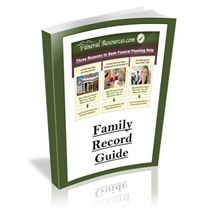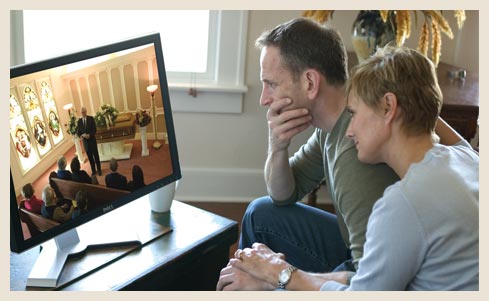Cemetery Planning and Funeral Planning
Burials For Cemetery Planning
Cemetery Versus Funeral Planning
For some people it can be difficult to understand the main differences between cemetery planning and the burial options versus funeral planning and the accompanying arrangements. Therefore, we thought it would be helpful to provide you with a brief overview that should help.
Cemetery Planning – Knowing Your Burial Options
1. Selecting an In-Ground Burial
When you are making cemetery arrangements for an in-ground burial, which is the most common type of burials, the main areas to focus on are purchasing a cemetery space (also known as a gravesite or plot). The other key issues here are selecting the items that you prefer to accompany this type of burial. This typically includes choosing caskets, a headstone or gravestone, memorial options (such as new gravestone technology), a burial vault (which is used to provide a permanent layer of protection surrounding the casket), and also identifying how you would like to conduct the ground “opening and closing” services.
2. Above-Ground Entombment
Cemetery planning that involves an entombment has a main focus of purchasing mausoleums, which are commonly referred to as an above-ground burial or “crypt”. Other key aspects that accompany a Cemetery entombment include choosing a casket, as well as selecting your preferred “opening and closing” service. Note: When choosing an above-ground mausoleum burial, there is no need to purchase a memorial or burial vaults.
3. Cremation Memorials
When you are making Cemetery arrangements that involve a cremation, this typically consists of choosing a memorial that can either keep the keep your loved ones remains in a safe, fitting, or appropriate final resting place. Some of the more common cremation options are cremation urns, cremation memorial jewelry, as well as some of the new funeral technology tools that are available today and many families are choosing, such as Memorial Diamonds, new Gravestone Technology, and Memorial Reefs.
Some people find it extremely important to know if there is a crematory, which is the facility that conducts cremations, is actually on-site of the Cemetery, or if it is located at an outside and stand-alone location. Therefore, if it is important to you that your loved one’s body and remains will stay at the actual Cemetery at all times you should be sure to inquire about this.
In Summary
Cemetery planning typically involves in-ground burials, above-ground burials (entombment via mausoleums), or cremations.
Funeral Planning
Just as the name implies, funeral planning is typically performed at a Funeral Home. The Funeral Home and Funeral Director are responsible for supporting details such as the visitation, any funeral ceremony, as well as any burial ceremonies that may take place.
The main differences are when you are making funeral arrangements versus cemetery arrangements is that there is a heavier focus on the choices surrounding the actual handling of the deceased’s body. Some of these key matters include planning for the delivery of the body from a home or hospital to the funeral home, as well as planning for services such as embalming or any other services designed to preserve and prepare the body for a visitation (also referred to as a “viewing” or “wake”) or other types of memorial services or funeral planning ceremonies.
In addition, some of the other arrangements that are involved with funeral planning include providing transportation of the deceased’s body from the Funeral Home to the final resting place, which can be either a burial site, a mausoleum burial site, or a crematory.
Finally, some other funeral planning challenges often involve assisting with the plans and preparations of the actual burial ceremony. It is important to note that although most Funeral Homes will likely provide you with many options for choosing a burial casket, cremation casket, and burial vault, the Federal Trade Commission created The Funeral Rule, which was specifically designed to allow families to purchase caskets and burial vaults outside the Funeral Homes should they choose to.
In Summary
Funeral planning is usually provided through Funeral Homes and Funeral Directors, who’s role is to help you with the various aspects of transporting and preparing the deceased’s body for burial options such as a visitation, a funeral ceremony, a burial ceremony, or cremations.






